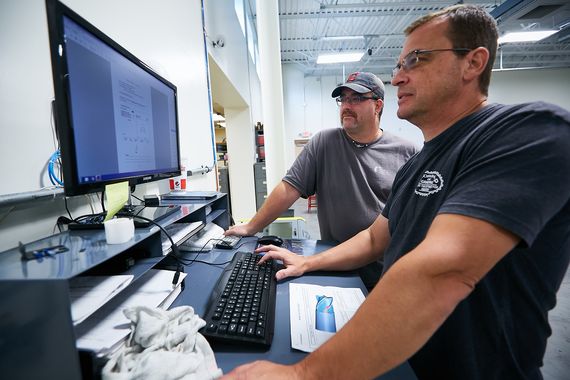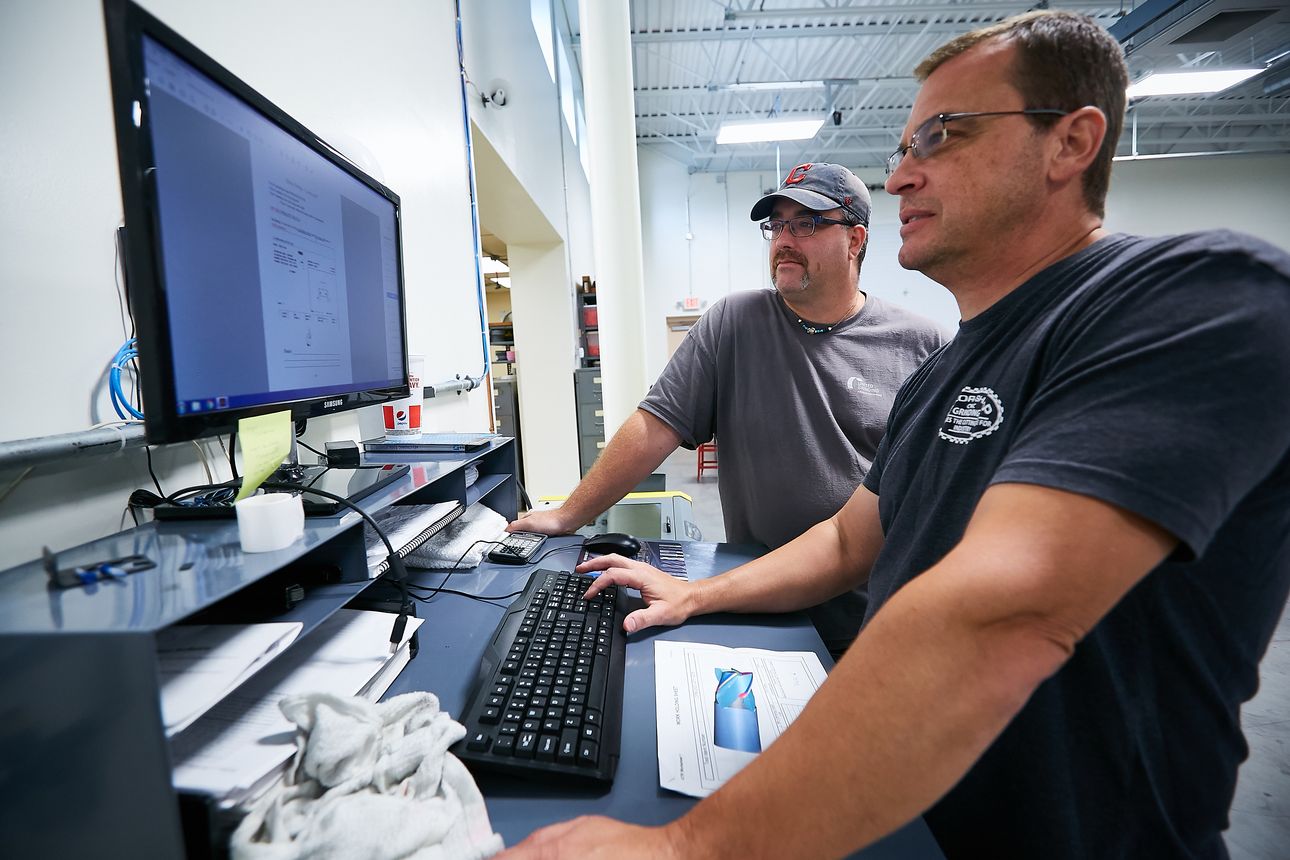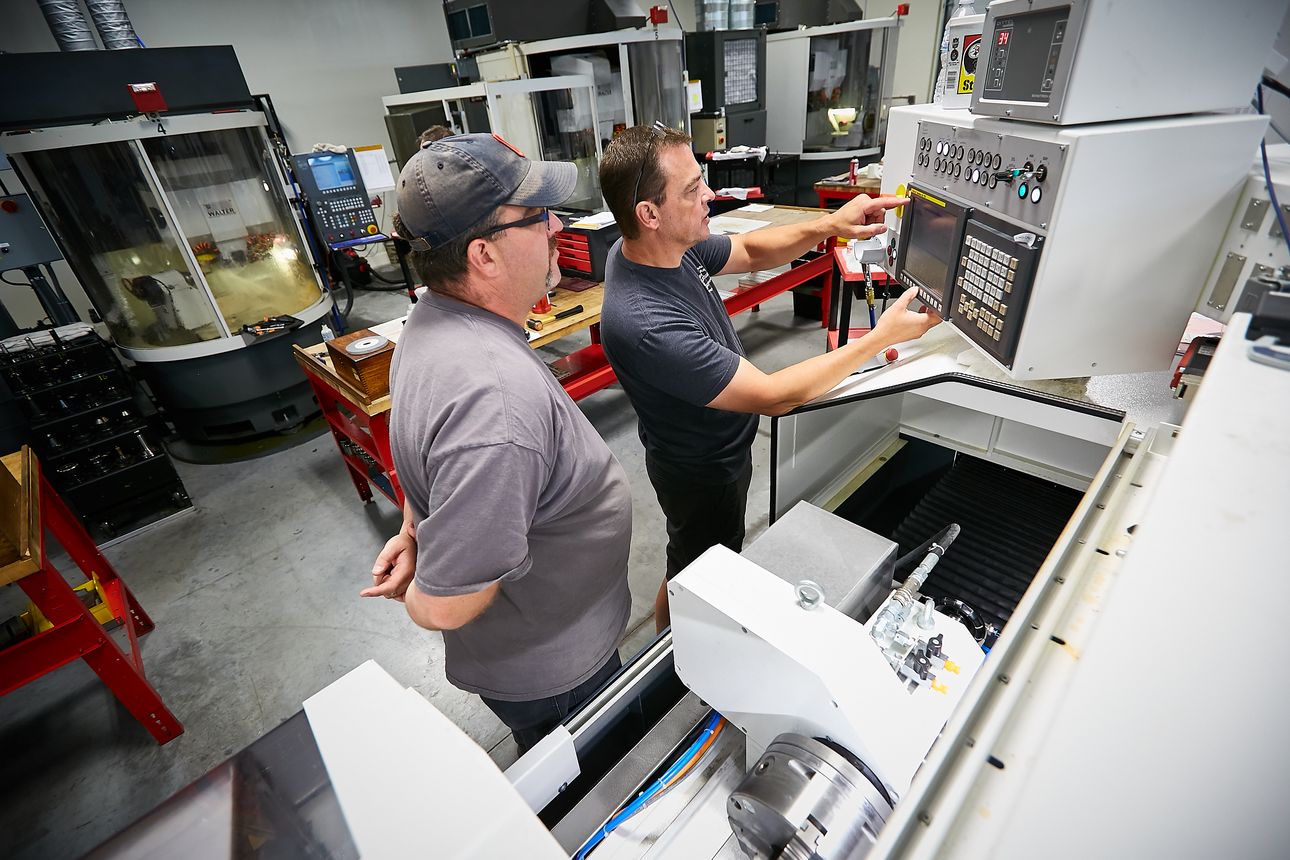Shop Grows with Cutting-Edge Grinding Technology
With a manual tool and cutter grinder, Dennis Reider founded Razor Sharp Grinding as a part-time business in the basement of his home in 1967. The shop moved to its present location in Pottstown Pa. in 1984, and business growth prompted remodeling and enlarging the building to its current size of 14,000 square feet.
Reider started out manually resharpening tools and has gradually segued the shop into the design and manufacture of tools as well as. Today, Razor Sharp manufactures its own extensive line of end mills ranging from high-performance variable pitch tools, roughers, ball nose cutters and stub and long-length end mills to chamfer tools, zero-flute plastic-cutting tools and reamers. Razor Sharp prides itself on maintaining an extensive inventory of its own end mills available for immediate shipment or same day pick-up.
In addition to production tooling, the company designs and produces specialty tools that cover a surprisingly wide spectrum. It produces custom hand reamers used by a musical instrument maker to open up the reed mouthpieces of oboes and “lollipop” style cylinder head porting tools used by race teams and engine builders in the US and as far away as Australia.
In the early days of Razor Sharp’s growth, Dennis’ wife Eileen spearheaded the company’s sales efforts, at one point covering six states and working with about 1,600 customers. It was an era in which women seldom, if ever, sold toolmaking services, but her grandfather was a machinist, and her father and her husband were tool and die makers, so she was in familiar territory and was successful.
“Eileen began to sell for Razor Sharp, and I haven’t had a day off since,” said Reider. “We don’t advertise – aside from an always growing workload from existing customers – new customers continually find us. We constantly have new customers sending us work and requesting quotes.”
Among the shop’s customers are the automotive, aerospace, medical, food processing and construction industries. Today Razor Sharp has about ten employees and $2.5 million in sales.
Razor Sharp’s grinding technology has evolved along with the volume, sophistication and variety of its products. The shop’s selection of advanced grinders has expanded from a single 5-axis unit from Walter Grinders purchased in 1991 to include eight Walter Helitronic Power machines and a Studer Favorit ID/OD universal grinder.
Jason Hunsicker, a grinder, programmer, and setup person at Razor Sharp, said, “Where we really shine and can help our customers is in our ability to design a tool that does more than one operation simultaneously.”
As an example, Hunsicker described a two-piece tool consisting of a steel body with brazed-in carbide inserts that Razor Sharp designed and manufactured for a manufacturer of automotive brake components. The inserts machine a custom form, and a central drill enables the tool to drill, spot face and shape the top of a hole in a single plunge. Razor Sharp designed the tool with a steel body and carbide inserts to control the cost of the tool while maintaining accuracy and tool life. For other customers, the shop has developed entire cutting systems consisting of not only cutters but toolholding arbors as well.
Razor Sharp bought its first Walter CNC tool and cutter grinder when that company introduced its initial tool and cutter grinder, prior to that making machines for tool production only. Reider chose Walter machines after a tour of the company’s facilities in Germany convinced him that the company’s machines were superior to competitors.
The arrival of Walter machines expedited Razor Sharp’s move into tool design and manufacturing. Hunsicker said, “The type of work we do has completely changed in the18 years that I’ve been here. Years ago we did routine resharpening of high-speed-steel end mills. We did not manufacture specialty tools. Now it is completely different. The technological forms and complexity of the tools we are manufacturing has increased tremendously. That is a direct result of our Walter grinding technology: their software, their machine capabilities and their training.”
Evolution of manufacturers’ production strategies has driven continual development of advanced cutting tools. The industry switched from high-speed-steel tools to carbide and focused increasingly on reducing manufacturing cycle times. Reider said, “A customer will not purchase a tool if it costs an extra five seconds of cycle time because it can’t be pushed hard enough, or if the tool has to be changed every 800 parts as opposed to every 1,100 parts.”
Razor Sharp designs its high-performance cutting tools with Walter’s Tool Studio software that facilitates design and manufacture of complex tools with interactive 3D graphics and simulation functions. “The software opened the door for us to get into that market,” Reider said.
According to Hunsicker, the repeatability of the Walter machines is a key advantage that he attributed, in large part, to the temperature control in the machine to reduce the amount of growth and shrinkage in heating and cooling cycles. He also cited the machine’s reference probing routine, in which the tool location probe is used to measure and adjust for size changes in the machine structure caused by variations in temperature.
Hunsicker illustrated the importance of temperature control with the case of grinding a typical hog mill. “Those tools tend to have a lot of variation in size over the course of a warm up cycle,” he said.
For the job, he ground one tool to specification, then put ten more in the machine’s loader pallet, pushed the machine’s start button and walked away. The last tool, according to Hunsicker, was only 0.0001" different from the first tool.
“That kind of repeatability is important,” he said, “because we are really a jobber shop. We are not producing large, long runs of tools. A customer may need three of one tool type or five of another, and that is a lot of what we do.
To enhance its responsiveness and expand its customer base, Razor Sharp recently added three new grinders, purchased through United Grinding.
Two of the new grinders are Walter Helitronic Power machines, 16-hp and 35-hp models fitted with 60 to 120-tool Eco-loaders that bring the shop’s total up to eight Helitronic systems. Razor Sharp acquired the new machines to expedite turnaround times for production of standard and customer-specific custom cutters, and especially to fill urgent tooling requests. The machines can handle tools up to 12.6" (320 mm) diameter. With up to six grinding wheels on the belt-driven spindle, the Helitronic Power machines can grind complex geometries in a single clamping cycle.
Reider said filling urgent tooling requests is one of his shop’s most important responsibilities. When tooling problems interfere with a customer’s manufacturing operations, he said, “What does it cost to shut a production line down for an hour? A hundred thousand dollars? Manufacturers don’t want to be down for a minute, much less an hour.”
Also, with the idea of expanding the variety of customers it serves, Razor Sharp acquired a new Studer Favorit OD/ID grinder, engineered for grinding medium-sized workpieces in individual and batch production. The machine gives the shop the ability to perform external and internal grinding in a single clamping on a wide variety of parts.
Razor Sharp sees keeping pace with improvements in grinding technology as a key challenge. “We don’t want to let technology get ahead of us,” Reider said, “When that happens it is hard to catch up and very expensive.” The drive for higher-performing tools has in turn prompted ongoing advancements in tool grinding technology. “The tooling industry provides better tools for the manufacturing industry, while the manufacturing industry is coming up with more productive processes that need different tooling. The way I see it, we are kind of pulling each other along together,” Reider said.












